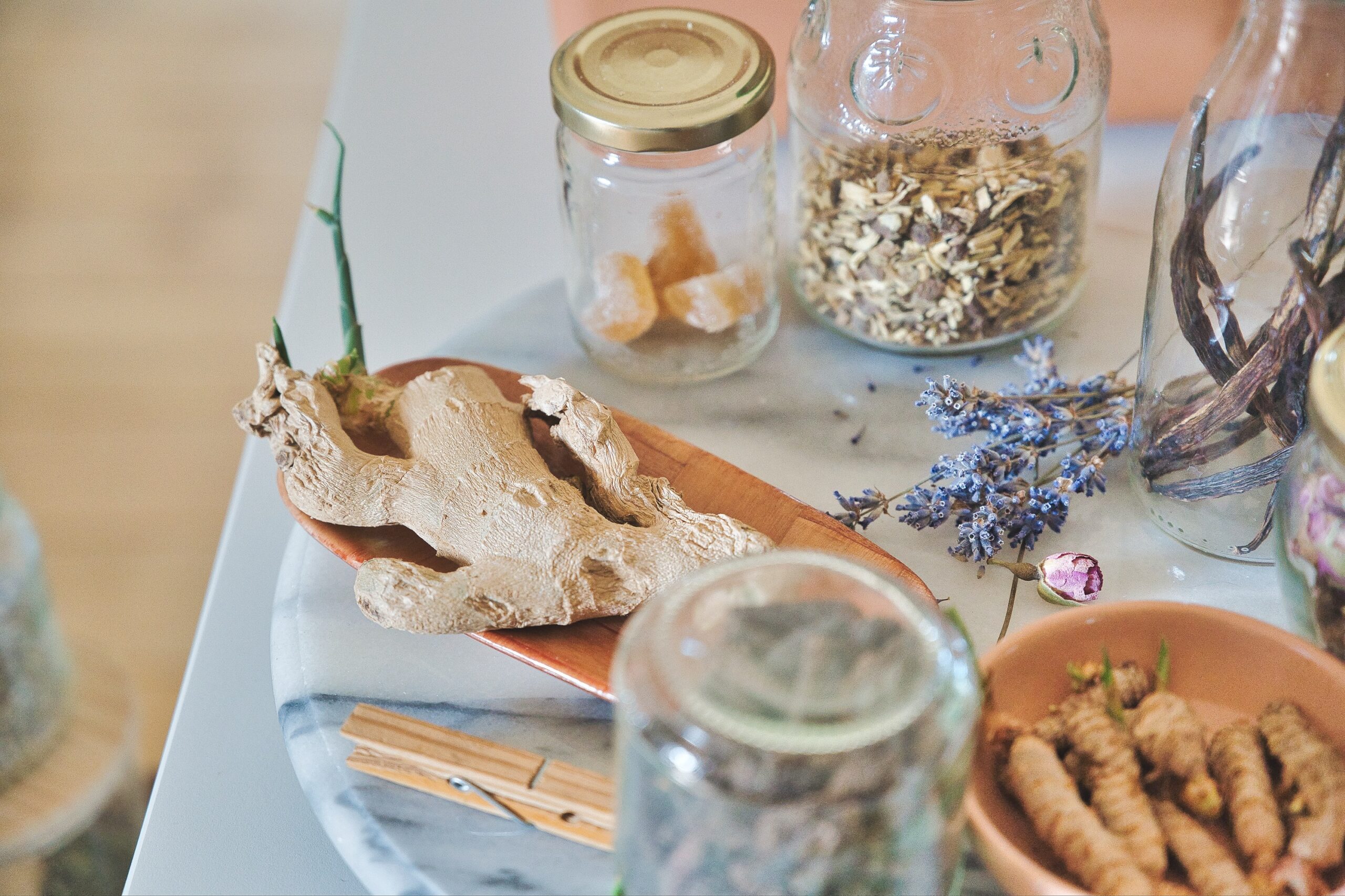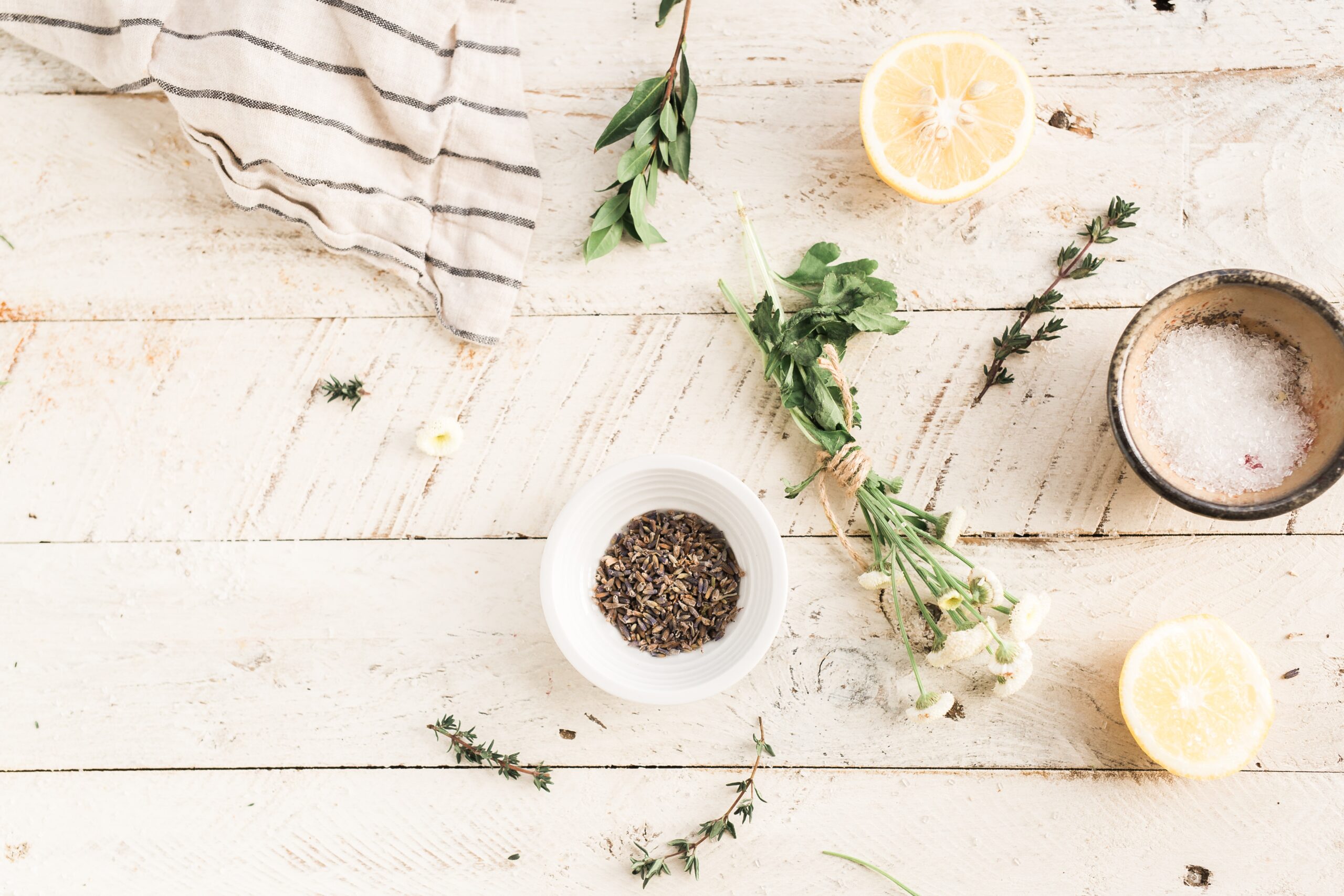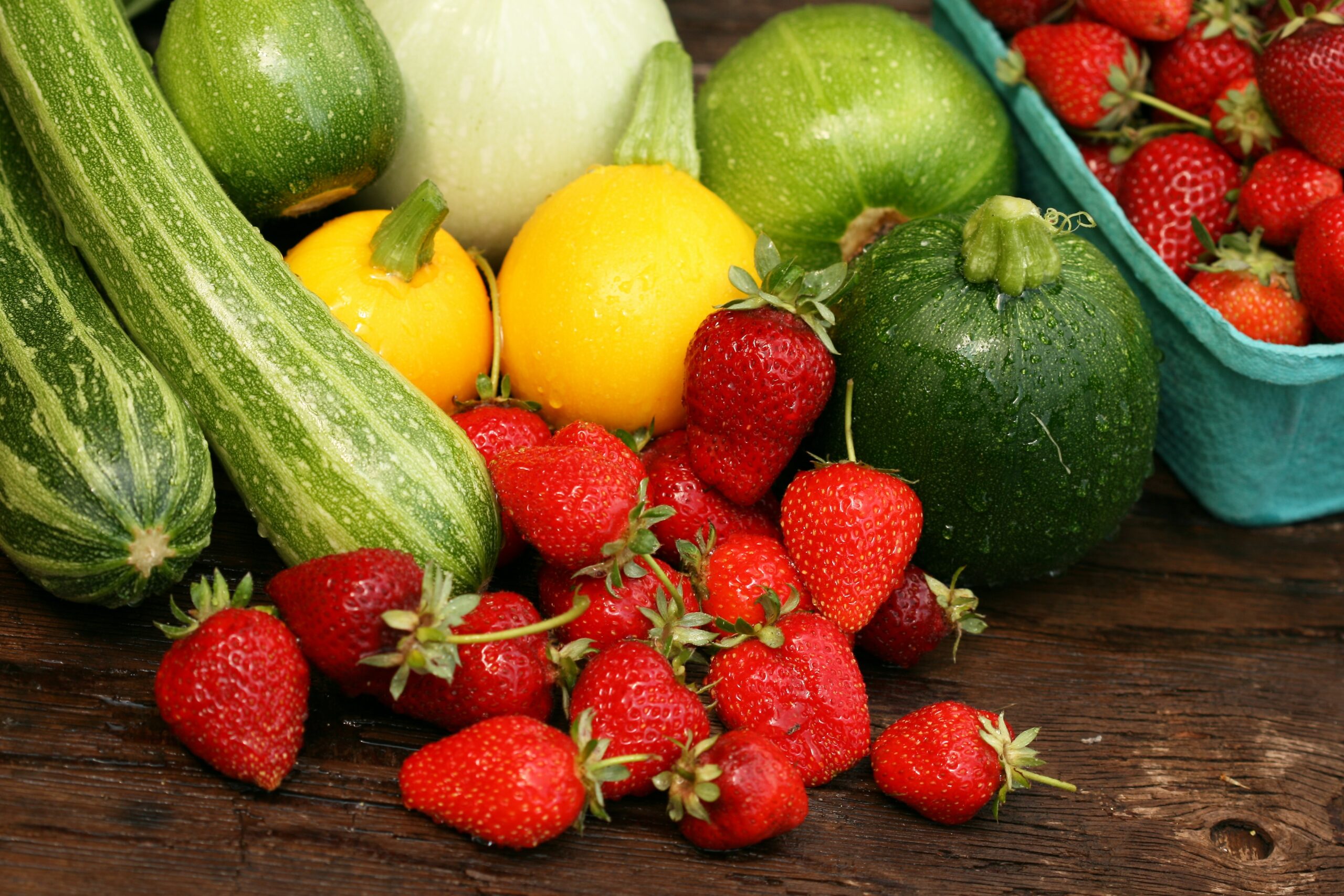7 Herbs That Promote Women’s Health
Introduction:
Women’s health is a major concern, and the world of herbal treatments provides a multitude of natural options to assist well-being at all stages of life. In this tutorial, we’ll look at seven herbs known for their distinct health benefits for women. These herbal friends have been used for decades for everything from hormone balance to menstrual comfort and vigor. Let us explore the realm of herbal wisdom and see how these natural treatments might help us live a healthier and more balanced life.

- Chasteberry: Hormone Balance
Chasteberry, commonly known as Vitex, is highly valued for its ability to promote hormonal balance. It helps relieve premenstrual discomfort and improve overall menstrual health, making it an important herb for women of all ages.
- Menopausal Comfort with Red Clover
Red clover includes phytoestrogens, which are natural substances that can help relieve menopausal symptoms including hot flashes and mood swings.
- Dong Quai: The Female Ginseng
Dong Quai is known as the “female ginseng” because of its numerous health benefits for women. It is believed to help with menstruation irregularity, cramp relief, and promoting a healthy reproductive system.
- Black Cohosh: Menstrual Relief
Black Cohosh is especially good at alleviating menstruation discomfort and promoting a more regular menstrual cycle. This herb has helped many ladies with cramps, bloating, and irritation.
- Evening Primrose Oil: Hormonal and Skin Balance
Evening Primrose Oil contains gamma-linolenic acid (GLA) and can help with hormonal balance, making it useful for premenstrual and menopausal health. It also benefits skin health.
- Shatavari: Vitality Booster
Shatavari is a revitalizing plant that promotes overall well-being and reproductive health. It is highly regarded for its ability to balance the female reproductive system and increase fertility.
- Maca Root: Libido and Energy
Maca root is well-known for its stimulating effects as well as its ability to improve libido and sexual function. It’s a natural way to increase energy and well-being.
Conclusion:
These seven herbs provide a natural approach to women’s health, aiding in hormone balance, easing discomfort, and promoting overall vitality. They have been utilized for centuries and continue to give a holistic and compassionate approach to well-being.
Cold Comfort: Natural Remedies to Soothe Winter Ills
Introduction:
As winter approaches, the common cold frequently makes an unwanted entrance. While it’s a seasonal annoyance, you don’t always have to rely on over-the-counter drugs to get some relief. Nature has a plethora of treatments that can assist you in combating cold symptoms and supporting your body’s natural healing processes. We’ll look at a variety of natural cold cures that have been used for generations to relieve congestion, soothe sore throats, and boost your immune system. Discover the effectiveness of holistic and time-tested methods for finding comfort and relief during the cold season.

1: Honey and Lemon: An Evergreen Tonic
When it comes to fighting cold symptoms, honey and lemon are a dynamic combo. A tablespoon of honey mixed with a squeeze of fresh lemon juice will help soothe a sore throat, relieve coughs, and improve the immune system.
2:Steam Inhalation for Congestion
Inhaling steam from a hot water bowl might help clear congested sinuses and improve breathing. By adding a few drops of eucalyptus or peppermint oil to the water, you can boost the effectiveness of this cure.
3:The Warming Power of Ginger
Ginger has long been valued for its natural medicinal benefits. Make a calming and warming ginger tea by steeping fresh ginger slices in hot water, then adding honey and lemon for a soothing and warming drink that can relieve cold symptoms.
4:Anti-Inflammatory Properties of Turmeric
Turmeric’s anti-inflammatory qualities can aid in the reduction of cold-related inflammation. To make a soothing beverage, combine turmeric with warm milk or water.
5: The Immune-Boosting Power of Garlic
Garlic is an excellent immunity enhancer. Crush a garlic clove and mix it with honey or soup for a tasty treatment that can help your body fight off cold symptoms.
6:Nature’s Cold Fighter, Echinacea
Echinacea is a well-known herb for its immune-boosting properties. To help your body’s defenses against the common cold, look for Echinacea supplements or teas at health food stores.
7: Rest and Hydration: Essential Allies
Rest is one of the most powerful natural cold cures. Make sure you get enough sleep so your body can heal. Hydration is also important, so drink plenty of water, herbal teas, and broths to stay hydrated and aid recovery.
Conclusion:
Natural cold cures not only relieve cold symptoms but also support your body’s natural healing processes. You can find comfort and relief while strengthening your immune system’s ability to resist the common cold by including these holistic ways into your cold season regimen.
The Power of Gut-Healing Foods
Introduction:
A healthy stomach is the foundation of general health. It is essential for digestion, food absorption, and even immune system function. If you want to improve your gut health and receive the benefits of a well-balanced microbiome, you’re in luck. We’ll look at the transforming power of gut-healing foods—natural, healthful substances that help support a thriving gut environment—in this guide. These foods are your partners on the path to a happier, healthier you, whether you’re looking for digestive relief, boosting your immune system, or simply striving for optimal health.

- Fermented Foods: Probiotics from Nature
Probiotics, the friendly bacteria that support gut health, are abundant in fermented foods such as yogurt, kefir, sauerkraut, and kimchi. These probiotics aid in digestion and nutrition absorption while maintaining a balanced microbiota.
- Fruits and vegetables high in fiber
Fiber is the building block of a healthy gut. Apples, bananas, broccoli, and sweet potatoes are high in soluble fiber, which feeds good gut bacteria and promotes regular bowel motions.
- Whole Grains to Improve Gut Health
Whole grains such as oats, quinoa, and brown rice are high in prebiotics, a type of fiber that promotes the growth of good intestinal bacteria. Consuming these grains can help to enhance intestinal diversity.
- Gut Repairing Lean Proteins
Lean proteins like chicken, turkey, and fish contain necessary amino acids that help with gut tissue repair and maintenance. They are easy on the stomach and can help with healing.
- Gut Inflammation-Reducing Fats
Anti-inflammatory omega-3 fatty acids found in fatty fish such as salmon, flaxseeds, and walnuts can reduce gut inflammation and promote a healthier gut lining.
- Bone Broth as a Digestive Aid
Bone broth is high in collagen and amino acids, which aid in the repair of the intestinal lining. It’s a great option for anyone looking to relax and mend their digestive tract.
- Digestive Wellness Herbal Teas
Certain herbal teas, such as ginger, peppermint, and chamomile, have been demonstrated to relieve stomach discomfort while also promoting overall gut health. Drink these teas to help with digestion.
- Supplements for probiotics
Probiotic supplements, in addition to food sources, can deliver a concentrated dose of helpful bacteria. Consult a healthcare practitioner to discover which probiotic is best for you.
Conclusion:
The foods you choose to nourish your body are the first step toward better gut health. You may take proactive actions to assist digestion, boost your immune system, and improve your general well-being by integrating gut-healing foods into your diet. A healthy stomach is the cornerstone of a happier, healthier person.
Sleeping in Style: Aesthetic Bedroom Ideas for Better Sleep
Introduction:
A good night’s sleep is critical for our physical and mental well-being, and the aesthetics of your sleeping environment can have a big impact on the quality of your sleep. If you want to improve your sleep while also creating a relaxing and visually appealing sleeping environment, you’ve come to the correct place. We’ll look at a variety of improved sleep concepts that embrace the concept of sleeping beauty in this tutorial. From soothing color schemes to comfy bedding, these ideas will turn your bedroom into a tranquil haven, supporting restorative sleep night after night.
- Choose a Serene Color Palette
The colors in your bedroom can have a significant impact on the quality of your sleep. Choose tranquil and understated colors like soft blues, gentle grays, or relaxing greens. These hues produce a sensation of calm and relaxation, making them a great backdrop for a good night’s sleep.
- Purchase High-Quality Bedding
High-quality bedding not only adds a sense of luxury to your sleeping environment, but it also helps you sleep better. Choose sheets that are both comfy and breathable, a supportive mattress, and fluffy pillows that fit your sleeping tastes.
- Adopt Minimalism
A clutter-free bedroom promotes greater sleep. To create a clean and calm sleeping environment, embrace minimalist design ideas. Take into account storage options to keep your bedroom organized and visually appealing.
- Ambient, soft lighting
To create a pleasant ambience, add soft, ambient lighting to your bedroom. To create a relaxing ambiance before bedtime, use table lamps or wall sconces with warm, dimmable bulbs.

- Use Nature-Inspired Decoration
Bringing natural elements into your sleeping room can improve its attractiveness and induce relaxation. To build a connection with the natural world, consider adding potted plants, nature-themed artwork, or organic textures like wooden furniture.
- Serenity Scented
Aromatherapy has the potential to improve sleep quality. To create a peaceful and aromatic ambience in your bedroom, use essential oils such as lavender, chamomile, or eucalyptus. You can accomplish this by using a diffuser or scented candles.
- Customize Your Sleep Environment
Add personal touches to your bedroom, such as family photos, important artwork, or decorative items that offer you delight. A tailored sleeping environment can provide a sense of comfort and relaxation.
- Blackout drapes
Use blackout curtains to block out light from streetlamps or the early sun. These curtains not only enhance the appearance of your bedroom, but they also improve your ability to sleep deeply and uninterruptedly.
Conclusion:
Creating a sleep-friendly environment with aesthetics not only encourages better sleep but also provides a sense of calm to your daily life. These suggestions aren’t just for making your bedroom seem nicer; they’re also for making it a calm sanctuary where you can enjoy the restorative power of sleep.
A Beginner’s Guide to a 7-Day Keto Meal Plan
Introduction:
The ketogenic diet, sometimes known as the keto diet, has grown in popularity due to its potential weight loss and metabolic health benefits. If you’re thinking about starting a keto diet, this 7-day keto meal plan will get you started. It offers a varied and delectable menu of meals that are low in carbohydrates and high in healthy fats, fostering ketosis, a state in which your body burns fat for fuel. Before making any large dietary changes, contact with a healthcare practitioner.
Day 1: Monday
Breakfast: Avocado and Bacon Breakfast Bowl
- Ingredients: Avocado, bacon, eggs, spinach, and cheese.
- Instructions: Cook bacon and spinach, then top with a fried egg and cheese.
Lunch: Keto Chicken Caesar Salad
- Ingredients: Grilled chicken, romaine lettuce, Parmesan cheese, and Caesar dressing.
- Instructions: Toss the ingredients together with Caesar dressing.
Dinner: Baked Salmon with Asparagus
- Ingredients: Salmon fillet, asparagus, olive oil, lemon, and seasonings.
- Instructions: Drizzle olive oil and lemon over salmon and asparagus, bake until cooked.
Day 2: Tuesday
Breakfast: Keto-Friendly Smoothie
- Ingredients: Unsweetened almond milk, spinach, avocado, MCT oil, and protein powder (optional).
- Instructions: Blend the ingredients until smooth.
Lunch: Zucchini Noodles with Pesto and Cherry Tomatoes
- Ingredients: Zucchini noodles, homemade or store-bought pesto, cherry tomatoes.
- Instructions: Toss zucchini noodles with pesto and cherry tomatoes.
Dinner: Keto-Friendly Beef Stir-Fry
- Ingredients: Thinly sliced beef, broccoli, bell peppers, and a low-carb stir-fry sauce.
- Instructions: Stir-fry beef and vegetables with the sauce.
Day 3: Wednesday
Breakfast: Scrambled Eggs with Spinach and Feta
- Ingredients: Eggs, spinach, feta cheese, and butter.
- Instructions: Scramble eggs with spinach and feta in butter.
Lunch: Turkey and Avocado Lettuce Wraps
- Ingredients: Sliced turkey, avocado, lettuce leaves, and mayo.
- Instructions: Wrap turkey and avocado in lettuce leaves with mayo.
Dinner: Grilled Shrimp with Cauliflower Rice
- Ingredients: Shrimp, cauliflower rice, garlic, and butter.
- Instructions: Sauté garlic in butter, add shrimp and cauliflower rice, and cook until done.
Day 4: Thursday
Breakfast: Keto Pancakes
- Ingredients: Almond flour, eggs, almond milk, and a sugar-free sweetener.
- Instructions: Prepare pancakes with these ingredients.
Lunch: Keto-Friendly Tuna Salad
- Ingredients: Canned tuna, mayo, celery, and spices.
- Instructions: Mix all ingredients together for a quick tuna salad.
Dinner: Baked Chicken Thighs with Roasted Brussels Sprouts
- Ingredients: Chicken thighs, Brussels sprouts, olive oil, and seasonings.
- Instructions: Season chicken and Brussels sprouts, bake until cooked.
Day 5: Friday
Breakfast: Greek Yogurt with Berries and Nuts
- Ingredients: Greek yogurt, mixed berries, and chopped nuts.
- Instructions: Top yogurt with berries and nuts.
Lunch: Keto-Friendly Egg Salad
- Ingredients: Hard-boiled eggs, mayo, mustard, and chopped pickles.
- Instructions: Mix eggs with mayo, mustard, and pickles for egg salad.
Dinner: Keto-Friendly Pork Chops with Creamed Spinach
- Ingredients: Pork chops, spinach, heavy cream, and seasonings.
- Instructions: Sear pork chops, make a creamy spinach sauce, and serve together.
Day 6: Saturday
Breakfast: Keto-Friendly Avocado and Egg Bake
- Ingredients: Avocado halves, eggs, bacon bits, and cheese.
- Instructions: Fill avocado halves with eggs, bacon, and cheese, then bake.
Lunch: Keto-Friendly Cobb Salad
- Ingredients: Grilled chicken, bacon, avocado, boiled eggs, blue cheese, and lettuce.
- Instructions: Toss all ingredients together.
Dinner: Lemon Garlic Butter Shrimp with Broccoli
- Ingredients: Shrimp, broccoli, lemon, garlic, and butter.
- Instructions: Sauté shrimp and broccoli in garlic butter, squeeze lemon over the top.
Day 7: Sunday
Breakfast: Keto-Friendly Chia Pudding
- Ingredients: Chia seeds, unsweetened almond milk, vanilla extract, and a sugar-free sweetener.
- Instructions: Mix ingredients and refrigerate overnight.
Lunch: Keto-Friendly Caprese Salad
- Ingredients: Tomatoes, mozzarella cheese, basil leaves, olive oil, and balsamic vinegar.
- Instructions: Assemble ingredients, drizzle with olive oil and balsamic vinegar.
Dinner: Keto-Friendly Beef and Broccoli Stir-Fry
- Ingredients: Thinly sliced beef, broccoli, and a low-carb stir-fry sauce.
- Instructions: Stir-fry beef and broccoli with the sauce.
Conclusion:
This 7-day keto meal plan includes a range of delicious and gratifying meals that comply to the keto diet’s low-carb, high-fat guidelines. Remember to keep hydrated, track your macronutrients, and alter portion sizes based on your particular dietary needs. It is best to contact with a healthcare practitioner or licensed nutritionist before beginning any new diet.
A Beginner’s Guide to Yoga: Poses and Benefits
Introduction:
Yoga is a holistic practice that can improve your body, mind, and spirit. It is more than just a physical workout. If you’re new to yoga, this beginner’s guide will teach you the fundamentals of yoga positions as well as the myriad benefits it may provide. Yoga can be a great addition to your daily routine whether you want to improve your flexibility, relieve stress, or find inner serenity.
1: Yoga Fundamentals
Before delving into specific postures, it’s critical to learn the fundamentals of yoga. In your yoga practice, learn about the importance of breath control (pranayama), mindfulness, and the mind-body connection.
2: Yoga Supplies for Beginners
You don’t need expensive equipment to begin practicing yoga. Discover how simple equipment, such as yoga mats, blocks, straps, and comfy clothing, can enhance your experience.
3: Basic Yoga Positions for Beginners
Explore a variety of beginner-friendly yoga poses that emphasize strength, flexibility, and balance. Each stance, including Mountain stance, Downward Dog, and Warrior I, is accompanied by detailed instructions and photographs.
4: The Advantages of Yoga Practice
Discover the numerous advantages that regular yoga practice can provide in your life. Yoga provides a full-rounded approach to fitness, providing physical benefits such as greater flexibility and muscle strength as well as mental ones such as stress reduction and improved attention.
5: Starting Your Yoga Journey
If you’re not sure where to start on your yoga adventure, this chapter will help you identify the proper yoga class or instructor, set up a home practice area, and develop a consistent routine.
6: Yoga Styles and Variations
Yoga comes in a variety of styles, each with its own approach to practice. Explore prominent yoga styles such as Hatha, Vinyasa, and Yin to choose which one best suits your objectives and tastes.
7: Yoga for Stress Relief and Mindfulness
Discover how yoga can be a powerful tool for stress management and mindfulness cultivation. Investigate certain positions and relaxation practices meant to help you achieve inner peace and tranquility.
Conclusion:
Yoga is a journey, not an end point. Remember that progress is a gradual process, and every step matters as you begin your practice. The goal is to approach yoga with an open heart and a desire to delve into the depths of your own existence.
5 Healthy Habits to Boost Your Immune System Naturally
Introduction:
Your immune system is the first line of defense against illnesses and infections in your body. Maintaining a strong immune system is critical for general health, especially during difficult times. Fortunately, by adopting a few simple and effective practices, you may naturally enhance your immune system. In this article, we’ll look at five healthy activities that can help you improve your immune system and stay resilient in the face of adversity.
1: Make Balanced Nutrition a Priority
A healthy diet is essential for a strong immune system. Include a range of bright fruits and vegetables that are high in vitamins, minerals, and antioxidants. Include citrus fruits, leafy greens, berries, and nuts in your meals. These nutrient-dense foods aid in the function of your immune system.
2: Maintain Hydration
When it comes to immunological health, proper hydration is sometimes overlooked. Water is essential for eliminating toxins from your body and preserving general health. Drink at least eight glasses of water every day, and for extra hydration, consider herbal teas and water-rich foods like cucumber and watermelon.
3: Make Quality Sleep a Priority
A good night’s sleep is essential for immunological function. Deep sleep allows your body to repair and renew, including your immune system. Each night, aim for 7-9 hours of unbroken sleep. Make a soothing evening routine, avoid using electronics before bed, and keep your sleeping environment pleasant and dark.
4: Consistent Physical Activity
Exercise not only keeps your body fit, but it also helps your immune system stay healthy. Regular physical activity, such as brisk walking, jogging, yoga, or dance, is recommended. To increase your immune response and reduce inflammation, aim for at least 150 minutes of moderate activity every week.
5: Effective Stress Management
Chronic stress might gradually impair your immune system. Incorporate stress-reduction strategies into your everyday routine. To reduce stress, try mindfulness meditation, deep breathing techniques, or yoga. Adequate sleep and regular exercise are also important in stress reduction.
Conclusion:
By incorporating these five healthy behaviors into your daily routine, you may naturally increase your immune system and improve your overall well-being. Remember that immunological health is a multifaceted activity, and tiny, consistent adjustments in your lifestyle can make a big difference in your body’s ability to fight off infections.
Achieving Inner Peace: A Step-by-Step Meditation Journey
Introduction:
Finding inner calm in the midst of modern life sometimes appear to be an unreachable quest. However, the road to inner peace is closer than you realize. This step-by-step meditation method will lead you on a transforming journey toward the inner calm you seek. Whether you’re a seasoned meditator or just starting out, this guide will provide you with the tools and techniques you need to navigate the world of meditation and uncover the serenity that exists inside you.
1: Understanding Inner Peace
Before you begin your meditation journey, you must first grasp what inner peace is and why it is important in our lives. To set the stage for your meditation practice, we’ll look at the concept and advantages of inner calm.
2: Preparing Your Meditation Space
It is critical for a successful meditation practice to create a suitable environment. Learn how to create a tranquil meditation place in your house, whether it’s a dedicated room or a little part of your living room.
3: The Foundations of Meditation
We’ll cover the essentials of meditation in this chapter, including posture, breathing techniques, and selecting a comfortable sitting position. These fundamentals are required for an effective and comfortable meditation practice.
4: Mindfulness Meditation
One of the most popular types of meditation is mindfulness meditation. Learn how to cultivate mindfulness by paying attention to your breath, physiological sensations, and thoughts, and how to stay in the present moment.
5: Meditation on Loving-Kindness
Loving-kindness Metta meditation, also known as compassion and love meditation, is a practice of cultivating sentiments of compassion and love for oneself and others. We’ll walk you through the process of cultivating kindness and goodwill.
6: Body Scan Meditation
Body scan meditation is focusing your attention to various parts of your body in order to promote calm and awareness. Discover how to conduct a body scan and alleviate stress from head to toe.
7: Guided Meditation
Following a recorded or live meditation conducted by an instructor is what guided meditation entails. Explore a selection of guided meditations that address various aspects of inner peace, such as stress reduction and self-compassion.
8: Overcoming Obstacles
Meditation isn’t always a breeze. We’ll go over typical meditation obstacles and offer suggestions and tactics for overcoming them so you can stay devoted to your practice.
9: Integrating Inner Peace into Daily Life
Learn how to incorporate the tranquility you discover in meditation into your daily life. Discover ways for keeping mindful and calm in stressful times.
Conclusion:
As we get to the end of our meditation journey, keep in mind that inner peace is a never-ending process of self-discovery. You can achieve a profound sense of inner quiet, balance, and tranquility by persistently practicing meditation and implementing its principles into your life.
Finding Peace in a Hectic World: The Ultimate Guide to Mindful Meditation Techniques
Introduction:
Finding moments of serenity and inner peace in today’s fast-paced and chaotic environment is critical for our well-being. Mindful meditation is a great tool for cultivating peace and equilibrium in the midst of chaos. This thorough guide will introduce you to a variety of mindful meditation practices that can alter your daily life, whether you’re new to meditation or looking to deepen your practice. Let us go out on a journey to find the inner calm that has always existed within you.
1: Understanding Mindful Meditation
Before we get into the practices, it’s important to understand what mindful meditation is all about. Learn about mindfulness, its advantages, and how it can help you improve your mental and emotional health.
2: Meditation on Mindful Breathing
Focusing on the breath is one of the most basic yet powerful kinds of mindfulness meditation. Learn how to breathe mindfully, using the breath as an anchor to the present moment.
3: Body Scan Meditation
Body scan meditation is systematically bringing your focus to various regions of your body. It’s a great way to unwind and become more in tune with your body senses.
4: Meditation on Loving-Kindness
Loving-kindness Metta meditation, or sending loving and compassionate wishes to oneself and others, is a type of meditation. It can aid in the development of sentiments of empathy and connection.
5: Walking Meditation
Walking meditation allows those who find it difficult to sit still to practice mindfulness while on the move. Discover how to transform your daily walks into a peaceful experience.
6: Mindful Eating Meditation
Eating can also be a conscious discipline. Learn about mindful eating, which encourages you to savor each meal and develop a healthier connection with food.
7: Guided Meditation and Visualization
Following along with a recorded or live meditation taught by an instructor is what guided meditation entails. Visualization techniques might assist you in creating a mental sanctuary for stress alleviation and relaxation.
8: Integrating Mindfulness into Daily Life
Mindfulness isn’t just for meditation sessions. Learn how to incorporate mindfulness into your regular routines, starting with mindful listening.
Conclusion:
As we come to the end of this definitive guide to mindful meditation practices, keep in mind that the path to inner peace is a continuing one. By adopting these activities into your daily life on a regular basis, you will gradually gain a deeper sense of calm and present.
Your Ultimate Guide to Wellness: Achieving Health and Happiness
Introduction:
In today’s fast-paced world, obtaining wellness is a goal that we can all relate to. We all want to live healthier, happier lives, but it may be a daunting task at times. You can, however, embark on a fulfilling road towards wellness with the correct direction and education. This thorough guide will provide you the tools, tactics, and insights you need to achieve both physical health and long-term enjoyment.
Chapter 1: What Is Wellness?
Before we go into the technicalities, let us first define wellbeing. Wellness is more than just the absence of illness; it is a complete state of well-being that includes physical, mental, and emotional health. It is about achieving balance in all aspects of your life in order to live a fulfilling and pleasant life.
2: The Pillars of Wellness
To achieve wellness, we must address various key pillars that contribute to our overall well-being. These pillars include:
- Physical Health: Tips for maintaining a healthy body through nutrition, exercise, and regular check-ups.
- Mental Health: Strategies for managing stress, anxiety, and promoting mental clarity and resilience.
- Emotional Health: Techniques for understanding and nurturing your emotions for greater happiness.
- Social Well-being: Building and maintaining meaningful relationships for a fulfilling life.
- Spiritual Wellness: Exploring your sense of purpose and inner peace.
Chapter 3: Crafting Your Wellness Plan
Now that we’ve laid the groundwork for wellbeing, it’s time to design a personalized wellness plan. Your strategy should be adapted to your specific needs and goals, while also taking into consideration your existing state of health and happiness.
4: Nutrition and Exercise
A healthy diet and regular physical activity are important components of wellness. Learn how to make healthy food choices, find an exercise regimen that works for you, and maintain your commitment to a better lifestyle.
5: Stress Reduction and Mindfulness
Stress is an unavoidable aspect of life, but how we deal with it has a significant impact on our well-being. Investigate numerous stress-reduction approaches, such as mindfulness, meditation, and relaxation exercises.
6: Building Resilience
Resilience is the ability to recover from losses and hardships. Learn how to boost your resilience and negotiate life’s ups and downs with grace.
7: Increasing Happiness
Happiness is a mental state that can be fostered and cultivated. Investigate positive psychology principles and techniques in order to increase your total happiness quotient.
Chapter 8: Resources and Assistance
You don’t have to go it alone on your path to wellbeing. Find helpful resources, groups, and expert assistance to keep you on track.
Conclusion:
As we conclude this ultimate wellness guide, keep in mind that gaining health and happiness is a lifetime journey. It necessitates dedication, self-compassion, and a willingness to develop and change. You’ll be well on your way to a life of well-being, health, and lasting happiness if you use the insights and tactics outlined here.









